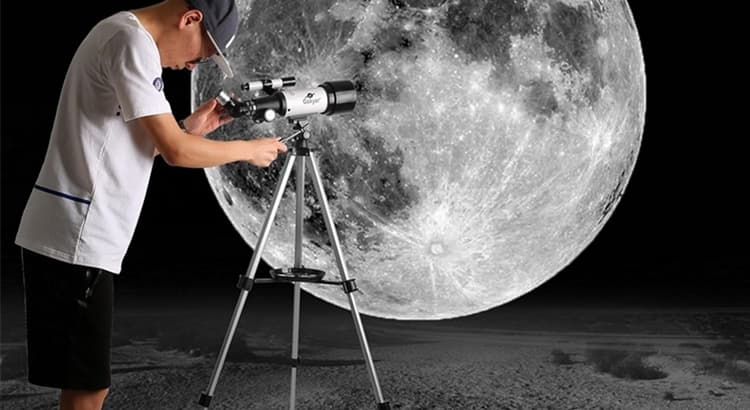Howdy, fellow stargazers and celestial enthusiasts! As we embark on our cosmic journey, one of the fundamental questions that often arises is, “What is the best direction to point a telescope?”
Whether you’re a seasoned astronomer or a novice with a newfound passion for the night sky, this exploration will guide you through the considerations, techniques, and celestial wonders that define the optimal direction to aim your telescope for an unforgettable stargazing experience.
Understanding the Night Sky
Before we delve into the best direction to point a telescope, let’s establish a foundational understanding of the night sky. The celestial sphere is divided into two primary regions – the northern hemisphere and the southern hemisphere.
Observers in different locations on Earth will have varying views of the night sky due to their respective latitudes.
Choosing the Right Hemisphere
The best direction to point your telescope depends significantly on your geographic location. If you’re in the northern hemisphere, celestial objects situated in the northern portion of the sky will be more accessible and prominent.
Conversely, if you find yourself in the southern hemisphere, you’ll want to focus on objects in the southern part of the sky for optimal viewing.
Seasonal Considerations
As the Earth orbits the sun, the night sky changes with the seasons. Certain constellations, planets, and deep-sky objects become more visible during specific times of the year.
Understanding the seasonal variations and the associated celestial highlights can guide your decision on the best direction to point your telescope.
Embracing the Constellations
Constellations serve as celestial signposts, guiding astronomers to various regions of the night sky. Depending on the time of year, different constellations take center stage.
For example, during winter, the constellation Orion graces the night sky, showcasing its iconic belt and bright stars, making it an excellent target for telescope observation.
The Zenith: A Celestial Sweet Spot
The zenith, or the point in the sky directly above an observer, is often considered a celestial sweet spot for telescope pointing. Objects near the zenith experience less atmospheric distortion, providing clearer and sharper views.
However, the accessibility of the zenith depends on your latitude, and it may not always be the best direction for observation.
Targeting Planets
Planetary observation adds a dynamic dimension to telescope pointing. The best direction to observe planets depends on their current positions in the night sky.
Astronomical software and apps can help you identify the location of planets on any given night, allowing you to point your telescope precisely for a captivating planetary view.
Chasing the Moon
The moon, Earth’s natural satellite, is a captivating celestial object for telescope observation. The best direction to point your telescope for lunar viewing depends on the moon’s phase.
During a full moon, any direction will provide an excellent view, while during crescent phases, targeting the moon’s illuminated portion will reveal intricate details along the lunar terminator.
Exploring Deep-Sky Objects
Deep-sky objects, including galaxies, nebulae, and star clusters, open up a vast celestial landscape for exploration. The best direction to point your telescope for deep-sky observations depends on the specific objects you wish to target.
For example, the Orion Nebula is a prominent winter deep-sky target, while the Andromeda Galaxy shines in the fall sky.
Aligning with Equatorial Mounts
If your telescope is equipped with an equatorial mount, aligning it with the celestial equator enhances tracking accuracy. The celestial equator is an imaginary line in the sky directly above Earth’s equator.
Pointing your telescope towards the celestial equator ensures smoother tracking of celestial objects as the Earth rotates.
Staying Adaptable and Curious
While understanding the best direction to point your telescope provides a valuable starting point, the beauty of astronomy lies in its ever-changing nature.
Staying adaptable and curious allows you to explore the entire celestial sphere, discovering new wonders and embracing the unexpected. Be open to the serendipity of the night sky, and let your telescope be your guide to the cosmic unknown.
Conclusion
In conclusion, the best direction to point your telescope is a multifaceted consideration that blends geographic location, seasonal variations, and celestial targets of interest.
Whether you’re navigating constellations, targeting planets, or exploring deep-sky objects, each direction unveils a unique aspect of the cosmos.
As you embark on your celestial adventure, remember that the night sky is a vast canvas, and your telescope is the brush that brings its wonders to life. So, adjust your telescope’s direction with the changing seasons, explore new celestial horizons, and let the cosmic ballet unfold before your eyes.
The best direction to point your telescope is the one that leads you to the next awe-inspiring discovery in the boundless expanse of the night sky. Happy stargazing, fellow cosmic travelers!





